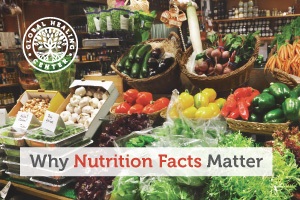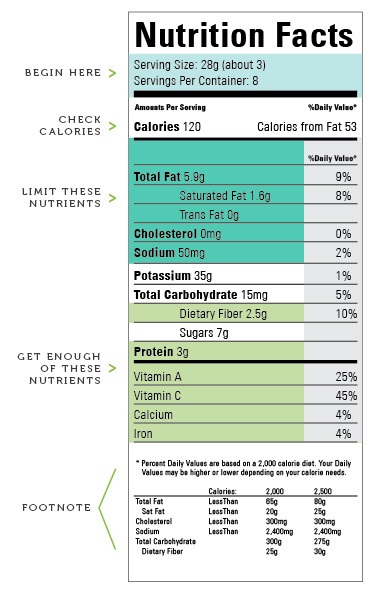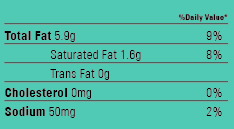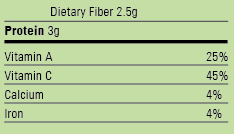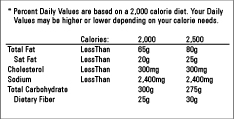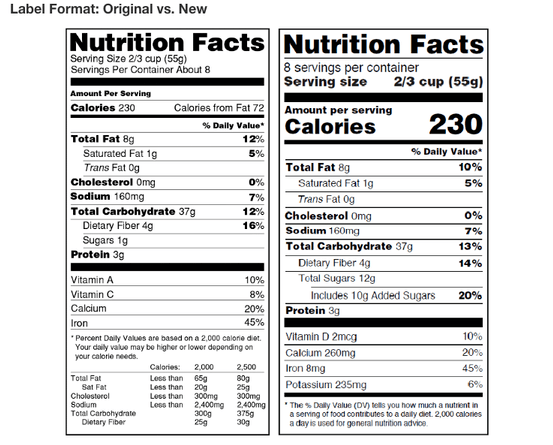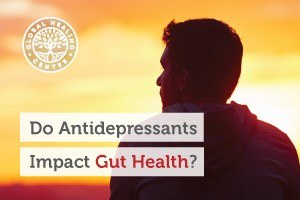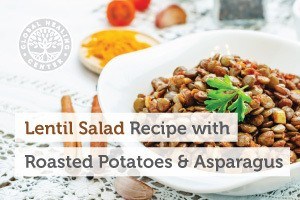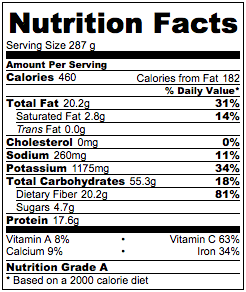Joe lost over 150 pounds and went on to become a health coach, helping others to develop a positive self image and create the healthy body they desire. He practices consistent self care, regular exercise, and great nutrition, and knows that he will never never regain the weight he lost – most of the time. However, there is a part of him that fears his weight challenges will always be with him, waiting in the wings to return the moment he lets down his guard, and he’d like to put these uncertainties to rest so that he can move on. In this uplifting session, Marc David, Founder of the Institute for the Psychology of Eating, helps Joe to realize that the way through is to honor the part of his life cycle that he’s in right now: a time to get more precise, to sharpen his inner sword, and to find the confident warrior within.
Below is a transcript of this podcast episode:
Marc: Welcome, everybody. I’m Marc David, founder of the Institute for the Psychology of Eating. Here we are in the Eating Psychology Podcast. And I am with Joe today. Welcome, Joe.
Joe: Hi, Marc. Thanks.
Marc: Thanks for being here. Thank you for doing this, Joe. I’m just going to take a couple of moments and say a few words to viewers and listeners who might be new. Here’s how the Psychology of Eating Podcast works. Joe and I have not yet met. And here we are and we’re going to spend an hour together and see what he wants to work on. And if we can take six months’ worth of coaching and magically condense it into one session. Impossible for sure but let’s set a high bar and see what we can do.
Joe, if you can wave your magic wand, get whatever you want from this session, and I mean that, what would that be for you?
Joe: Yeah. So there’s a couple of things. I’ll ask for a lot. So, one thing would be, I’ve lost a lot of weight, a significant amount of weight. In my lifetime I’ve lost about 160 pounds since I was in my mid-20s. So it’s a lot. And a big part of that, about 80 pounds of it is since I went pretty much vegan, like 99% vegan.
And I’m starting to really question that. I’m starting to feel little bit of a call for the first time after 4 years, to move back into that space. But I’m holding on to some fear around that. To be back in the space of eating animal products again.
So I’ve got some kind of fear I’d want to work on around that, get your opinion on the whole situation there.
The other thing is, no matter how I’ve eaten in my life, whether it’s been extraordinarily healthful, plant based with superfoods or whatever, it’s back in the day when it was just some of the most indulgent foods you could think of, constantly all the time, to get to be the size I was, I’ve always had a lot of challenges with digestion when it comes to gas. So I’d love your insights on that. To me, I’m wondering how much of that could be related to maybe some metaphysical connection, which I’ve been having that pretty much my whole life, even though I have changed my body and what I’ve eaten completely, entirely, multiple times. So those are some of the things that present with me when it comes to food, and eating challenges nowadays.
Marc: Got it. Can I ask how old you are, Joe?
Joe: Yeah, I’m 34.
Marc: Thirty-four. And what kind of work you’re doing in the world?
Joe: I’m a wellness coach, Marc.
Marc: Yay! And how, in your mind, you’re carrying around a pretty big body. How tall are you?
Joe: Five foot ten.
Marc: So, 5’10”. So when you had 160 extra pounds, you had a whole other person almost. When you look back on that time, what do you say to yourself, like, gosh I had that extra weight because…what do you say in your own head about that journey? Why was it there for you?
Joe: Yeah man, it’s a long answer but I’ll try and shorten it. I grew up obese. I was overweight from probably 3 years old. And in high school I was over 300 pounds and it was up and down, up and down until mid-20s when I started to make changes.
But really, it was food. Food was my coping skill.
And I lived in a lot of anxiety and fear based thinking that I wasn’t even aware of until I was probably, few years back, 31. And so yeah, it was my main go-to. It was my main way of numbing and controlling, and trying to control the situation around me, was food. So it’s a lot of circumstantial and emotional and family stuff. There’s a lot going on in there that got me to be that big for so long.
Marc: Sure. So, what was happening with you and your parents, if you can sum that up in 4 sentences?
Joe: Sure. My parents are awesome. They are still together now. But when we were young, they didn’t get along. And they fought a lot in front of us. My parents got married and they were both normal size and healthy. And they became obese and raised 3 obese children. So there was just a lot of tension, a lot of discomfort, lack of emotional safety growing up. And so that’s kind of where we all went.
Marc: And how did you lose the weight? Like was it, I tried and I tried, and it didn’t happen, and then one day, wow, I really got on the road. Or I didn’t really try and then one day I did. So just sort of, how did that part look?
Joe: Yeah. I would say the first 100 pounds, I wasn’t really trying. I hit a point in my life where a lot of things changed. I started to grow up a little bit. I got into a relationship with someone who is very environmentally focused. And we kind of cultivated that together.
That environmental friendliness led to learning a lot about food And learning a lot about our food systems.
And so, starting to make just lifestyle choices that were based around that, I started to just lose weight while eating like a king.
And eating wonderful, amazing food while really upgrading the quality of food that I was eating. So I lost a lot of weight that way.
And then, when I got inspired to drop animal products, I lost another big chunk of weight. And then the last big part of the weight was when my marriage kind of fell apart there. My life was very different and I got very inspired to kind of get rid of the rest. And move into the space of romance, and dating, and kind of figure it out, and get it right for the first time in my life, as a normal sized human being. So that was kind of a final big movement, was towards just creating a conscious life out of this loss that I had.
So, yeah, that kind of describes it. I didn’t really intentionally try and lose the weight. I think there was one point where I went to the doctor for a physical, in my mid-20s, after my mom nagged me for years. And I got on the scale, about 40 pounds bigger than I thought I was. That was a big wakeup. I started to make a few little changes then and lost some weight. But most of it came through just lifestyle changes that weren’t focused on losing weight.
Marc: So, are you at the weight you want to be at, right now?
Joe: Yeah, I’m totally good. I was 340, when I was 25, I’m 180 at the moment. And I feel pretty solid and awesome about who I am at even 200. But right now, sitting at a good spot, 180, I feel really vibrant and alive. And my body feels good.
Marc: Other than your body and all the great benefits for you, right-sizing it, what other benefits have you noticed for yourself, just you internally as a person?
What would you say, if any were, are your key inner shifts that have happened on this journey?
Joe: The key inner shifts have really been about seeing possibility in the world. I used to look through a filter of nothing will work, nothing’s possible, and I was very afraid of a lot of things. So the big shift has been really learning to get over a lot of fear based thinking, a lot of anxiety, physical anxiety which leads to mind anxiety. I’ve shifted a lot in the way that I handle emotional triggers. I feel as far as ability to navigate my life with emotional awareness and how to kind of handle myself around that, and using emotions as a kind of a sixth sense rather than having it control me, I’ve made some big strides.
And I’ve learned of course also along the way that we have a choice every moment. So I really, consciously craft my life nowadays. And really learned to take care of myself. Self-care and wellness is kind of my thing. So I prioritize me and who I am and that leads to so many other things changing in my life. I can give you a long list but those are the big headlines.
Marc: How’s your relationship with your parents these days?
Joe: It’s better and better all the time. It’s pretty solid. I’m very fortunate they live in the area. I get to see them quite a bit. A couple of times a month or so, we hang out. In my teens and in my 20s, I was really constantly just triggered by everything they do, in a very difficult way. And it was hard to be around my family.
And last few years, I really kind of love being around my family. They still frustrate me. But now it’s kind of like, I’ve learned to understand more about how people work. So I kind of see like, they do that because of this or that. And I get it. And it’s kind of cute. And I like to talk to them about some of the changes I’ve made and they try to make changes. It’s a whole different scenario now. And I like being around them even though they can still frustrate me.
Marc: How did they feel about your weight-loss?
Joe: They’re pretty excited. My whole family, everyone around me who knows me now or in the past, is always pretty supportive and excited about that. And also the fact that I have kind of made it my life mission to help people get healthy. They’ve been amazing. They’ve been so supportive.
I took a big step last year and quit my job as a retail manager, to create this impact in the world, helping people lose weight and become well and they’ve supported me every way, possibly, even financially in a big way.
And they’re my champions. They are my number one fans really.
Marc: Good for you.
Joe: Thank you.
Marc: Yeah. That’s a great thing to be able to say. And I don’t hear it as much as I think I should.
Joe: I hear you on that. A lot of the time I think people in our lives who haven’t necessarily changed when we have, becomes hard for them. But they’ve always been just thrilled and supported me. My dad followed in my footsteps, and stopped eating animal products, and he lost a bunch of weight. And my mom’s kind of always coming at me for, like little thoughts about, my doctor said this, what do you think? So it’s really kind of give and take, beautiful thing going on there.
Marc: So, let’s talk about you and being a vegan, and you and not being a vegan. What’s the challenge for you there?
Joe: I initially chose that lifestyle, I think really when I was still based in fear. I had seen enough information to help me believe that without eating animal protein, without eating animal fat, there was really not much cancer or heart disease or diabetes that happened in people, when they took themselves away from that type of diet, or standard American diet. But even of course like an animal heavy diet. And I’ve seen conflicting information back and forth since then. But the first thing then was my personal health. But I think it was based in fear.
I love the food that I eat now. I’m pretty excited about what I enjoy and what I eat. But I also think that maybe there’s a bigger picture that I was missing in making that kind of fear based choice. That I can integrate animal products back in. I can start eating eggs again, here and there. And maybe a little bit of meat here and there on a sparse basis. Knowing that I’d still want to be like 90% plant based.
But I still worry, like, was the choice I made a few years ago, was it the right choice?
I certainly feel like I can change and course correct.
But there’s always the worry of, could there be a slippery slope to gaining weight back.
My rational mind says, no man, you’ve got this. You’ve got it under control. You figured it out. I’ve fluctuated and weigh up and down and I make changes when I feel like. And I’ve kind of got it under control.
But there is still that kind of small, younger part of me that wants to say, you don’t get out of it. This will be a bad thing. You’ll start with eggs and then it will be cheese cake. There’s still that part that kind of fears that. That’s in a concise way what that’s a little bit about. I fear missing some nutrition as well too. I take B12 supplement and things like that.
But I fear there is some nutrition being missed in how I eat now. And I’m uncertain, and I’m willing to test, and try things, and try bring things back again. But something’s been holding me up because I’ve been saying that for like 6 months.
Marc: So it sounds like for you, and this is kind of a question, so it sounds like for you that looking at eating animal products is less of a sort of a moral dilemma and more of an issue around potentially my health, and what’s going to happen if I don’t eat those foods? And potentially, wow, what’s going to happen if this triggers me to eat all this nonsense and start to gain weight? So, is that accurate?
Joe: Yeah. The moral dilemma is in there. I’m not completely morally opposed to eating some animal products. I definitely despise the way animals are treated in our industrial food system. That was a big part of the decision too. But I know that there are better, and healthier, and more humane, and more sustainable sources that I can enjoy and feel somewhat okay about, Still not thrilled. I don’t draw a hard line and say people shouldn’t eat meat. I’m not the kind of guy who ever preaches, how can you do that? It’s never been my style. I’m not that way.
And so I’m willing to open the door. So it’s a fuzzy answer there. But it’s mostly based on personal health, yes.
Marc: Yeah. Well, it’s a fuzzy challenge, as well. And I say that affectionately. Because it’s not always so black and white. It’s not always necessarily about right and wrong, and good and evil. Why don’t we jump into this one right now? Because it’s a great place I think to play. Let’s talk about the moral piece because in a weird way to me, that just might be one of the easier ones in this. And let me just lay out some opinions for you. And see if they’re at all useful.
From the moral standpoint, and I’m going to admit my bias 100% here.
So I was probably pure vegan for about 12 years of my life.
Changed me tremendously, tremendously, tremendously. I’ve been probably at least 90 something percent plant-based in my diet forever. So, there is my bias.
Is there a moral dilemma killing animals? For sure, absolutely. Are we caught between a rock and a hard place in that moral dilemma? In a lot of ways, yes, because here you are on planet Earth and if you look around everything eats everything else. From the most fundamental cellular level, you have single celled organisms chomping on other single celled organisms. You have the creatures in the sea eating each other every day. You have animals in the jungle eating each other. And you and I got here. You don’t have vegetarianism in your genetic lineage.
We have found one population that goes back a number of generations, on this planet that’s vegetarian. It’s in India, it’s the Gujrat province. And they have one of the highest rates of heart disease in the world. So it’s an odd duck in a way. So what I would like to suggest is that, it’s a moral dilemma. And you might be eating animals and there it is, it’s not going to go away.
And that’s why in different traditions, you pray over the animal. You bless it. There’s prayers when you kill it. There’s prayers when you skin it. There’s prayers when you eat it. It’s this kind of dance that humans do between the thing that gave its life to them and sort of how we respect that or not. So I think there is a way for you to find in yourself your own kind of spiritual, religious, moral code where it’s not that you make it all better. But that you would admit to the universe that wow, this is a conundrum. Because the way this plan has been designed, everything eats everything else. Not everything is a vegetarian on this planet, at all. And there you have it. There is the odd setup that we have to deal with.
So to me, it’s an ongoing challenge that I think about every time I eat a piece of meat. I do the best I can to be thankful, to be humble, to understand, wow. I wouldn’t even have the nuts to kill the animal. I have a friend who, the only meat he eats, he kills it. He has goats. He sacrifices the goat. I don’t know if I could do that. I probably could if I had to, but wow. Okay, anyway. There’s that piece about it that I think has to be wrapped up in, this can’t be solved. There is no way one could go to sleep and say, ah, I did the right thing, the perfect thing by the following – not eating it, eating it. So to me it’s sort of how you make good with the universe, and with yourself, and with the creature that’s kind of given its life to you, or given its milk to you, whatever it is.
The health piece. Here’s the interesting dilemma. Just when you look at the research, when you look at the research, there’s only one conclusion and it is that there is no certain conclusion. And that’s just the reality of it. You can see brilliant, great, interesting research on why a plant based diet is the best. You can see brilliant research on, oh my god, you go on a paleo diet and look at the miracles.
And one of the challenges we face with different diets and their health and medical effects on the body, is that the human mind looks at diet from a religious standpoint.
In my opinion we look at it from right and wrong. Which is the right diet, Joe? And which is the wrong one? So if Joe finds the right diet, Joe and me, and all of us, we’re in the right. But if we eat the wrong diet, we’re in the wrong. As opposed to, what’s the right diet for you now and then, next year, and then the next year, and then the next year, and then the next year.
So, what I want to say is, we get caught up in so much nutritional nonsense that’s not your fault or my fault because that’s the field. It’s uncertain, it’s unclear, it is driven by industry and media, who have their own agenda. It’s driven by extremes. The people who are rabbit meat eaters and this is the way it is, or the people who are ethical vegans, and if you look at an animal in the wrong way, you’re bad. And we have to have an interesting middle ground there, I think.
So, to me, it’s about being a nutritional explorer. It’s about bringing your values with you. And I hear that you have values and that you have care. And to me that’s a sign of growth. It’s a sign of character. Meaning, hey, I’m thinking about this. I care about this. And, in so many ways that’s the best we could ask of ourselves to really place the challenge on the table. And you’re saying to me, hey, here’s my dilemma. Here’s all these factors and I’m over here going, yeah, you’re right. You’re right. Those are not all easy factors.
So what I’m saying is, from my health standpoint, for me observing humans, and I especially love observing humans not to find the right diet but just to watch what they go through. And to watch their changes. Because that tells me something. And what I’ve noticed is that when we pay attention, the body calls for what it calls for and there might be a time in your life where being a vegan is beyond the best metabolic dietary and personal move you can possibly make. And there will be times when it’s the opposite, where eating meat and animal based products is one of the best moves that you could possibly make. And it depends on the season of one’s life and of one’s body. And it also depends on one’s journey and how you choose to context your journey.
So you will not be pleasing the vegans if you change your diet. You might not even be pleasing the paleo people who want to see you eating more of it. I don’t know. You might not be pleasing the gluten-free people if there is wheat in there. You’re not pleasing someone in this. And probably a lot of someones.
So it really gets down to, I think, the relationship that we have between our body, how connected are we to it.
And you’ve already told me in your journey that you have more and more landed in your body and like wow, I was not in my body, probably from this unbelievably young age. You figured out how to get back in.
Joe: Yes, you got that right.
Marc: Yeah. By the way, as much as you described about your diet, you equally described about your emotional world. When I asked you, so Joe, why did you think all this weight was on there? And you got into a conversation about your experience of life. How you dealt with emotions. So learning to manage emotions is being in the body. Because if I check out of my body, I don’t have to deal with all that craziness. So all I’m saying is, as a person, as a man who has entered his body and has now going okay, what’s right here? What’s right for me? How do I help other people be in their body in a good way?
So, in your profession then, you’re helping somebody be the voice for their body. You’re just kind of listening and tuning in and giving suggestions. So here I am doing the same for you over here. And for me over here, I’m just raising my hand and going, hey, I think you’re on the right track. And the right track means you’re respecting yourself, you’re listening to yourself, you’re asking questions. You’re being circumspect. And you’re asking a good question to me. Because there’s a powerful dichotomy almost between animal versus no animal, in terms of eating. And for some of us, there needs to be a middle ground.
Being on planet Earth, and being that we’re tied to the ground, we’re tied to food, we’re tied to breathing air, we’re tied to water, we’re tied to needing other humans, we’re tied to needing sunlight. And many of us are tied genetically to needing animal foods. I know humans, I know people who are unbelievably morally clear, I’m an ethical vegan. And they know their health is suffering for it.
They actually know it. And I watch it. And they’re making a choice which I wouldn’t do that but I find it admirable. It’s like okay, you’re drawing your line in the sand, you’re making a stand.
So I would love to suggest that you follow your inner wisdom, and your inner guidance.
There’s the health standpoint. Because nothing is going to prove to you. You can read all the research and your head is going to be spinning. Because all the experts say something different. They all have proof to back it up. And they all skew it. And the reason why they do is because of, number one, bias, plain and simple. You prove what you think is true. There is a bias but there’s also, we ask the wrong question oftentimes. It’s like, is this good or bad? Well vegan isn’t for certain people. It’s good for certain times in their lives, it’s awful at other times. I’ve watched people suffer on such a diet. I’ve watched people suffer on paleo. And I’ve watched people just sore on either one of those.
So, what I’m saying is, there’s a beautiful place in you, called, I trust myself in this. And that to me gets to what you were talking about before, around well hey, is this going to be like my gateway drug to gaining weight again. Am I going to start to want cheesecake? Am I going to start to want more, and more, and more? And all of a sudden, I’m back to being that guy. I love that. What I love about that is, you’re kind of catching a real life fear that’s in there, that might not make any sense. That might not sound so manly. But we’re human. And you’ve been down a certain road. And you’ve noticed a certain change being a vegan.
Or letting go of animal foods to a significant degree. So it makes sense that you would correlate eating that with going back.
So, to me, this is less about trusting the diet, it’s less about trusting your choice, is it right? Is it going to send me back?
And it’s way more about you trusting Joe like never before.
Just Joe trusting Joe. And what you’re trusting is, even if this experiment doesn’t work, even if I notice, whoa, this is putting on a few pounds, this doesn’t feel right, I’m eating things I know I shouldn’t be eating, the trust is, that you can catch yourself and respect yourself enough, and have enough fortitude to then make a shift. That’s what it’s trusting. It’s not trusting that this is going to be the right choice. It’s trusting that it’s a good choice. Might not be the right one but based on the facts, and I’m just over here saying, in my opinion, yeah, that’s a good choice. I’ve got no problem with it.
And, my guess is, because you already hinted at this, yeah, you’re going to eat free-range healthy eggs, and you’re going to go for the high quality versions. And you’re going to watch yourself and you’re going to listen and you’re going to look, and you’re going to notice how you feel. So, you can trust that you’ll do that and you can also choose to trust that no matter if this experiment flops, you can recuperate, recover, readjust, and get back to where you need to go. So it’s kind of like, yeah, you might fall down, but you could pick yourself up. Do you see that little spin on this last piece that I talked about?
Joe: Yeah. And that’s kind of that’s what I kind of know to be true. I know that if it’s going awry, I’m smart enough to figure it out and make a change. And I have so many tools in my tool belt. One of them might be, no animal products. One of them is listen to my body. All the things you talked about, I get it. The rational part of me goes, yeah, you get it. But yeah, I still have that little bit of a piece in me that isn’t trusting completely. It’s like that 10% that’s holding on to the shirt, like pulling me down.
And it is related to trust because it’s almost like, I know I can do this, and I know it’s worth it for me to try, and if I feel horrible, I know it will be one day experiment.
But there’s still that part of me that’s kind of graduating into a deeper level of trust and almost needed like a permission, to hear it from you.
To hear it from someone who really has put their mind and their experience, their whole kind of life work into these types of topics and this whole body of work that you do. To hear it echoing what I’m thinking in the back of my head, in the rational side of my mind, helps tremendously. Yeah, totally helps give me that little extra push and go, just trust yourself enough.
Marc: I also think Joe, that there is a part of us humans sometimes, that we get so specific and we want to be so on target, that if we’re not 100% trusting, we might not do something because we’re waiting for 100. And you could be at 40% trust and do something. You could be at 5% trust and do something. I think life gives us certain challenges at certain times, you’ve probably had times in your life where you had to do something where you had to really seriously trust and you didn’t have a lot of trust in you. But you might have done it anyway.
So, what I’m saying is, this is a great place to bring your distrust with you. To give it a little hug, and to say, okay, I don’t need you to not be here. In fact, happy that you be here, because it kind of keeps me honest a little bit, it keeps me on my toes, it keeps me human, it’s what’s happening. I don’t need to be at 100% trust to do something. I could still be scared.
One of my favorite books of all time, that I have never read, I’m going to admit it, I’ve never read. It’s one of my favorites. It’s called Feel the Fear And Do It Anyway. And the first time I saw the title, I kind of had a revelation. Like, oh, that makes perfect sense.
Because there’s so many times in life, I had fear but I did it anyway.
And there’s so many times in life, I had fear and I stopped myself. So I didn’t read the book because I thought what else is there to know?
But anyway, that’s kind of what I’m saying here to you, is that, maybe for you there’s a lesson here in how you bring your fear, or your mistrust with you and make it a companion and understand it. And have compassion for it. And not look at it as an impediment but look at it as just, yeah, it’s a human part of me. That makes perfect sense. Given my history, given the story, given the possibilities, it makes perfect sense.
Joe: Yeah. That’s a different spin on it. I’ve been working to kind of cultivate more trust of which voice I want to listen to, learn what my body is telling me and trust the body. And I’ve not taken the little extra piece that says, you don’t need 100% trust, just do something. Just choose something and just go. You’ll be okay. It’s definitely a different spin on it that puts a few pieces together with some nice glue. It’s awesome.
Marc: Yeah. It allows you to move forward now and it takes away the artificial conundrum. The artificial conundrum is, well, I can only move forward if I have pretty much close to 100% trust. And I’m over here going, who? Says who? Because I know in my life and I’m willing to bet, in your life you’ve moved forward plenty of times with way less trust.
So, it’s just a question of embracing that part of you, loving it up. Not looking at it as if it’s even counter post, looking at it like it’s a sensible voice in the tribe of people in your head. Because you have a committee in there. It’s not just one guy. There is Joe the coach, there is Joe the guy, there’s Joe the boyfriend, there’s Joe the son, there is Joe the man, there is Joe the kid sometimes. It’s like there’s all these different people in there. And at different times they’re all active, or one of them is more active. And there’s the part of Joe that just, god, I’m a little fearful and I don’t trust. Great. Cool. There is plenty of situations where you will be afraid and not trust potentially. Okay, makes sense.
Joe: Yeah, I got you. Bring it along.
Marc: Yeah. So, thoughts for you? Comments about all of this so far?
Joe: No. Yeah, you kind of nailed that aspect of it right away. So, so far that makes complete sense. Looking for that 100% trust is so silly. And I see it.
And that’s why we need other people to help us see our own stuff.
So, yeah, I’m kind of onboard with, I think I’m going to start the first tier of the experiment here soon. As far as that is concerned, I feel pretty solid. And I’m totally resonating with what you say.
In my men’s community, we do a fair amount of shadow work based development. And there’s that whole concept. I’m constantly helping facilitate guys and coach people on whatever that part of you is you’re trying to get rid of. Just bring it along, make sure the other voices, the ones you want to hear, they’re in control. They’ve got this. Listen to them more. But bring them along. You can’t run away from it. So it’s totally like receiving some of my own advice and it was pretty amazing to hear that. Thank you.
Marc: You’re welcome. Isn’t that funny how that happens? And there’s one last piece in here that I might have said but I want to emphasize again about this part here, about trust. It’s potentially and arguably a pretty big fear for a guy like you to go, whoa, I don’t want to go back to where I was. That’s a pretty intense thought. I’m just trying to put myself in your shoes or anyone’s shoes, who might have come from that past in terms of my body, my weight, my health, my everything, and how it all bottled up. And wow, and I’ve unwound this, I’ve morphed myself. And then there’s this fear of, oh my god, I might return to that.
So, again I want to say what I’ve noticed is that, no matter what age group you’re in, that fear has the potential to return in many different forms. It’s almost like, life kind of spirals around and you might be in such a great place for years, and then all of a sudden, whoops, I’m getting divorced, or I’m getting separated. And all of a sudden, you’re 19 years old again. Or you’re 15 years old. Even though you’ve been down this road, and even though you’ve built up a bank account of maturity, we can end up feeling feelings from separations, divorces, challenges, stresses, that, wait a second, I thought I was done with this. So this is probably one of those. It’s probably one of those where ha-ha, you thought you were done with it. And then, oh my goodness, there’s still something in there.
So, I look at that as just a deeper level of dive into self, and it’s a deeper level of dive to reach into a deeper part of you that is even stronger and that is even more committed to standing by yourself.
So it’s not about getting rid of the fear so much as it is rising to meet that fear.
And it’s almost like going into battle and being afraid, while you’re in battle.
Joe: Yeah, exactly.
Marc: So, this could be a very interesting piece of men’s work for you because it’s challenging you. And it’s a very internal challenge. And it’s very personal. And some people might not understand it but it doesn’t matter because it’s your personal challenge and it’s real for you. And the realness is, oh my goodness, this fear of going back to that old place. And you have to be such an advocate for yourself and such a believer in yourself, and you have to be a risk taker. So, in a lot of way, you have to be a good gambler. And sometimes when you gamble, you’re afraid of rolling the dice because you might lose. But you roll it anyway and you take a good bet. So, I feel like there’s a part of you that’s surely digging a little deeper here into your own sense of self-ownership. And oftentimes that’s what the 30s are for a man.
For a man, I’m just going to go off on life cycles, just of a moment here, if I may. Because I like to place us on a map. Just to see you are here, well where is here? Twenties for a man is very rocky, it’s really up and down. It’s an amazing time because you have unbelievable power, energy, immortality. The world is at your feet. And you’re also dragging your past with you when you are in your 20s. And you’re striving for your future and you’re dragging you past. And it’s an unbelievable tumultuous time for a lot of men, even though you’re at the height of your physical energy in so many ways.
And when you look at research on 7 year cycles, they usually say right around the age of 28 to 30, there’s a transition zone in there. Something solidifies. Between 28 and 30, we take our past and we go, oh my god, I’m carrying some interesting luggage with me. Who am I? What am I doing? Who are these people? Who are these parents? Who am I? How do I move into the future? Thirties is kind of like moving into your future. Perhaps for the first time you have more of you than you’ve ever had before.
And 30s are about metal sharpening metal a little more. Twenties is all about getting knocked around. And trying to get back up. And trying to fight a lot of demons and trying to be victorious. And you’re still going to be doing that but you’re sharpening your sword in a whole different way. And a lot of that sword-sharpening happens on the inner level. So, 30s is about, is there like tweaks. Oh, if I sharpen just this way, now I’ve got even a better sword. It’s lighter, but it’s sharper, but it’s more dangerous. Oh, this is good.
So, to me, this is what you’re doing. You’re doing more specific and elegant tweaks that life is showing you on the screen of your existence. Like, okay, here’s this next for you now. Here’s the next fear we’re going to work on.
And your willingness to look at those subtleties will determine the benefit you get from meeting that challenge.
So, it’s kind of what I hear. I hear you naming these challenges and saying, I want to meet these. Which is me saying, I think you’re unbelievably right on schedule here. You’re right on task. You’re doing what you’re supposed to be doing at this life stage, which is becoming a heck of a better warrior, not just because you’re flailing around really hard, but because you’re going within and you’re looking at the right move that you need to make. Does that ring true for you at all in anyway?
Joe: Yeah, that makes sense. Yeah, definitely. I’m big into understanding the life cycles. I loved hearing you talk about that related to my life. And that totally makes sense. And what came up a few minutes ago, hearing you was, it’s not a fear of gaining weight back, it’s really a fear of slipping back. The fear that will keep coming up throughout my life, like you talked about is, will I slip back to that place of lack of consciousness, to that place of numbing, that place of comfort all the time. And that place of not navigating my inner world in a way that helps me show up to be the big bold person that I am now.
So it’s that energetic connection to who I used to be on the inside and how I showed up. It’s not really about the weight. The weight I’ll handle. So that’s what’s going to keep coming up, to challenge myself with. And sharpening the sword is important. Yeah, it’s definitely a bigger piece.
And there’s also some identity stuff that comes up with all that. I don’t like being called a vegan. But at the same time, people know me for not eating animals. And so then there’s all this work that can be done within this, around renegotiating that part of the identity, and how it’s seen by others, and how I see myself. And so, man, thank you. There’s a lot more in this than even I was considering by leaps and bounds. And I have much more clarity around it.
Marc: That’s great. Good for you. And again, let’s just answer the question by saying, will I lapse back into that old person, to being unconscious, to disappearing? Yeah, there’s going to be moments where you do that. There is going to be a moment here and there.
There’s going to be minutes here and there when we fall into a black hole.
So sure you’ll go there. But really the question is, how long am I going to stay there? 2 seconds, 10 seconds, a minute, maybe you’ll get sucked in for a day. But it’s shortening the timespan where we go to sleep. So it’s setting the alarm clock so it wakes us up quicker so you’re not asleep for 20 years but you’re asleep for 20 minutes or 2 minutes, or one minute.
So, people get this interesting fear when we slip back and it’s less about that and more, wow, here’s me slipping back because I’m human. Because the mind will do that. It’s that fickle. But you can turn it around in a second. Literally in a second. And it becomes a game of time. How long do I stay there, as opposed to, oh, my God, I just slipped there and now I must freak out because I’m never supposed to go back there. You see the distinction I’m playing with here?
Joe: Yeah, absolutely. I’ve heard that before too, from someone who’s a mentor, pretty wise. It’s like, you might fall in a little hole, you might trip a little, but we keep gaining the skills. I keep cultivating the skills, sharpening the sword to get out much quicker. There you go. It’s a great way of looking at it, for sure.
Marc: Yeah. So you mentioned before about your digestion. Was it gas that you said or bloating? How would you describe the issue?
Joe: Yeah. Really my whole life, some sort of gas and bloating, and it still boggles my mind that no matter where I’ve been as far as food and eating, it’s always there.
Marc: Have you ever worked with a good sort of functional medical doctor on this? Have you ever gotten any kind of gut testing?
Joe: I haven’t got gut testing, like what’s popular now, talking about the microbiome and such. I have gone to gastroenterologists at pretty good hospitals couple of times in my adult life. And had tests done and endoscopies. And all the whole deal. And they always say, we don’t know. They don’t ever know.
Marc: Okay. I greatly urge you to go see a functional medical doctor who specializes in digestion. The traditional GI doctors are not even going to come close to doing the kinds of testing that’s out there, that the functional docs are doing right now. There is even one in your area, Dr. Robynne Chutkan. She’s wrote a book called Gutbliss. She’s really good. She’s in your area. I believe she sees patients. I believe she has a clinic. So the book, Gutbliss, Dr. Robynne Chutkan. But if it’s not her, find a good functional medicine doctor.
There’s a darn good chance that we can find something very simple that’s going on. You might have H. pylori forever. And what you’re describing is very much related to H. pylori. It could be that. It might not be. But you might discover some very simple bacterial overgrowth, yeast overgrowth. Honestly, if I was the betting man, I would say that’s probably what you’re dealing with, if it’s been lifelong. But let me ask you this question.
Are you generally a fast eater, moderate eater, or a slow eater?
Joe: I was waiting for this one. Nowadays it’s moderate to slow, certainly. Moderate to slow. There’s rare occasions where the fast thing kicks back in, when I’m moving too fast, thinking too fast. But it’s rare nowadays.
Marc: Yeah. So if you’re a slow eater and if you feel that I can eat a meal, and just be here, and present, and relaxed, and not fighting food, and not worried that it’s going to make me fat. If you have some level of friendliness with food, and you’re a moderate to slow eater, and you’re still experiencing gas, I would bet a million bugs that you have a longstanding gut issue. That’s either bacterial, yeast, or H. pylori is a good guess. There’s a very simple functional test for that. But it could be life changing. And I really, really mean that.
To me, it behooves you to go down this road because it’s simply going down the road of using the kind medical professional who, this is what they’re fanatic about. They’re fanatic about the latest, most interesting, most cutting edge tests and understanding when it comes to the digestive system.
So most of the GI specialists are kind of in the middle of the pack. They have an advance to what’s possible in this round. It takes us a while. It takes the mainstream a while to catch up to what’s new and interesting sometimes. So I think that could make a big difference to you. At the very least it will give you a heck of a lot more information about what’s going on. And it could be a really amazing thing.
Joe: Yeah, could be amazing to clear that from my body, from my existence.
Marc: Yeah. So, I would go for that. I would really look at finding a good practitioner in your area. If it’s not the doctor I mentioned, go to the Institute for Functional Medicine website and they have a place where you can find a practitioner in your area.
Joe: Awesome, beautiful.
Marc: Yeah. So how are we doing my friend? How are you feeling?
Joe: Excellent.
Brought a lot of clarity to my current situation and clarity that it will bring into further situations when this same fear pops up another way.
And yeah, that’s a good arrow in the direction of looking at the gut health. It’s another one of those things where it’s like, yeah, I’ve been thinking about that for a while but I’m feeling like this would get me to take some action, hearing it from you. You speak with amazing clarity around that. So tells me, okay, that’s what I needed to do.
Marc: Yeah, for me sure it’s a bias but it’s also just watching what works, what doesn’t. What gives you, me, us the best probability of moving forward. So it’s all about the probabilities here. And what you describe, puts us in the zone of, wow, this is a gut issue. This is very likely that. So high probability. Yeah, I’m excited for you. It feels like you’re extracting the most possible value from the journey that you’ve been on. And I really feel that as human beings, we can’t do anything more than that. Really.
Like, that’s some of the best of what we can do with our life, is to take the challenges that we’ve had, the hardships, the confusions, and go right into the heart of them and see, wow, how do I use this to heal myself. How do I use this to actually transform myself? And you’ve done that. And you’re doing it. And now you’re helping other people do it. What an amazing thing. Congratulations.
Joe: Thank you. That’s exactly what I’m trying to do, help more people see these challenges that we’re faced with, whatever they may be, the roadmap is in there for whatever is going to make you happy, or whatever is going to get you healthy. It’s in there. And a lot of that is inspired by your work. So thank you. Thank you for doing this.
Marc: Well, you’re welcome. We do that for each other. I think that’s the name of the game here.
So, Joe, I so appreciate your honesty, your openness, your willingness, and all the great work that you’ve done.
And I know this is going to be helpful for a lot of people listening in. So thanks again.
Joe: Awesome. Thank you.
Marc: And thanks everybody for tuning in. Much appreciate it, to have your time, your energy, your attention, and always lots more to come, my friends. You take care.
The Institute for the Psychology of Eating
© Institute For The Psychology of Eating, All Rights Reserved, 2016
Get Your FREE Video Series
New Insights to Forever Transform Your Relationship with Food
P.S. If you haven’t had a chance to check out our FREE information-packed video series, The Dynamic Eating Psychology Breakthrough, you can sign up for it HERE. It’s a great way to get a better sense of the work we do here at the Institute for the Psychology of Eating. If you’re inspired by this work and want to learn about how you can become certified as an Eating Psychology Coach, please go HERE to learn more. And if you’re interested in working on your own personal relationship with food, check out our breakthrough 8-week program designed for the public, Transform Your Relationship with Food, HERE.
source
http://psychologyofeating.com/the-psychology-of-eating-podcast-episode-143-even-a-great-health-coach-can-struggle-with-weight/

